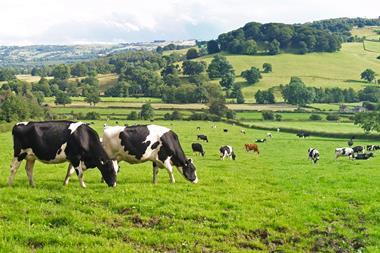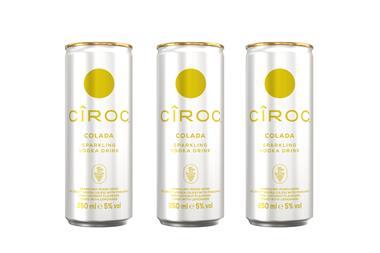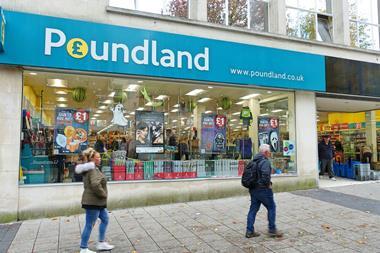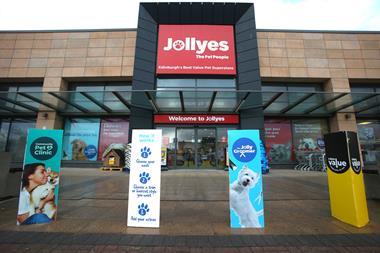The future looks bright for the Henderson Group, says Ronan Hegarty
Martin Agnew, MD of Henderson Wholesale, believes that the arrival of Asda on the Northern Ireland retailing scene has acted as a catalyst for those in the independent sector to drive even greater professionalism in their businesses.
For Henderson this began back in March when the company changed its name and revamped its corporate image to reflect the rapidly changing nature of its business.
The company, formerly John Henderson Limited, became the Henderson Group, with five distinct divisions. As well as Henderson Wholesale, a delivered operator supplying 500 Spar and Vivo stores, it comprises Henderson Retail, which operates 51 company-owned Spar and Vivo stores, Henderson Property, Henderson Print and Henderson Foodservice.
Northern Ireland is a relatively small market, which means that the three biggest wholesalers - Hendersons, Musgrave SuperValu-Centra and J&J Haslett - can often lose sight of the bigger picture by trying to score points off each other.
Asda’s entrance, combined with a greater regional focus from Sainsbury through its Northern Irish buying unit, has brought that picture back into focus. The goal, says Agnew, is to stay at the heart of the community, both in terms of location and relevance of offer.
He claims that the combined strength of the Spar and Vivo symbols gives the group around 12% of the grocery market in the province. He admits that this is a long way behind Tesco, but it puts it alongside Sainsbury and Asda.
Of course, for Henderson this is its only market, so staying ahead of the game is vital. That is not an easy task, as it has to cope with spiralling operating costs, mostly for fuel and energy. “Oil prices are a major concern, but in a market as competitive as this we have no choice but to absorb it as best we can. We can’t afford to pass it on to our retailers or consumers,” explains Agnew.
In practice, this means pushing for ever-greater efficiencies. Henderson is seeking to carry out more deliveries in the evenings, when there is less traffic, for instance. It also tries as far as possible to take advantage of the proximity of the Irish Republic, with cheaper fuel just over the border.
For such a small market, however, Northern Ireland is becoming increasingly cluttered, and finding prime locations for retail space is a major concern.
The delivered wholesale operators in Northern Ireland have a long history of investing alongside their independent retailers, which has helped to make its c-store sector the envy of the trade in the rest of the UK. Now, however, with property at a premium, Henderson is looking to help retailers find stores in the first place.
“We are beginning to build up our property business. By having a dedicated team out there looking for the best sites, we can help retailers get their first store. Through building up a bank of sites we can then lease them out to retailers,” says Agnew.
“This has also proved useful in a number of cases where we are able to facilitate ambitious retailers who currently operate small groups of four to six stores and are keen to expand but do not have the capital to invest in property themselves.”
It is investment at this level that Agnew sees as being a crucial weapon as the battle with the multiples heats up. Asda is sure to seek to expand its store portfolio in the province and this is likely to take it into smaller, more community focused stores.
As for meeting this threat head on, Agnew sees Henderson’s future in developing larger store formats of its own. It already has plans to open six large convenience stores or small supermarkets in the next 18 months under its Eurospar and VivoXtra formats.
Agnew says the group is also on the lookout for potential acquisition targets. With little opportunity for this in Northern Ireland, he hinted that this could take the group into the Republic of Ireland for the first time.
What is likely to be Henderson’s next move, however, is into the top 10 of The Grocer Big 30 list. It was number 11 when we published the list in January and with its growing portfolio, as well as consolidation among companies ahead of it on the list, a spot in that élite group is all but assured.
Martin Agnew, MD of Henderson Wholesale, believes that the arrival of Asda on the Northern Ireland retailing scene has acted as a catalyst for those in the independent sector to drive even greater professionalism in their businesses.
For Henderson this began back in March when the company changed its name and revamped its corporate image to reflect the rapidly changing nature of its business.
The company, formerly John Henderson Limited, became the Henderson Group, with five distinct divisions. As well as Henderson Wholesale, a delivered operator supplying 500 Spar and Vivo stores, it comprises Henderson Retail, which operates 51 company-owned Spar and Vivo stores, Henderson Property, Henderson Print and Henderson Foodservice.
Northern Ireland is a relatively small market, which means that the three biggest wholesalers - Hendersons, Musgrave SuperValu-Centra and J&J Haslett - can often lose sight of the bigger picture by trying to score points off each other.
Asda’s entrance, combined with a greater regional focus from Sainsbury through its Northern Irish buying unit, has brought that picture back into focus. The goal, says Agnew, is to stay at the heart of the community, both in terms of location and relevance of offer.
He claims that the combined strength of the Spar and Vivo symbols gives the group around 12% of the grocery market in the province. He admits that this is a long way behind Tesco, but it puts it alongside Sainsbury and Asda.
Of course, for Henderson this is its only market, so staying ahead of the game is vital. That is not an easy task, as it has to cope with spiralling operating costs, mostly for fuel and energy. “Oil prices are a major concern, but in a market as competitive as this we have no choice but to absorb it as best we can. We can’t afford to pass it on to our retailers or consumers,” explains Agnew.
In practice, this means pushing for ever-greater efficiencies. Henderson is seeking to carry out more deliveries in the evenings, when there is less traffic, for instance. It also tries as far as possible to take advantage of the proximity of the Irish Republic, with cheaper fuel just over the border.
For such a small market, however, Northern Ireland is becoming increasingly cluttered, and finding prime locations for retail space is a major concern.
The delivered wholesale operators in Northern Ireland have a long history of investing alongside their independent retailers, which has helped to make its c-store sector the envy of the trade in the rest of the UK. Now, however, with property at a premium, Henderson is looking to help retailers find stores in the first place.
“We are beginning to build up our property business. By having a dedicated team out there looking for the best sites, we can help retailers get their first store. Through building up a bank of sites we can then lease them out to retailers,” says Agnew.
“This has also proved useful in a number of cases where we are able to facilitate ambitious retailers who currently operate small groups of four to six stores and are keen to expand but do not have the capital to invest in property themselves.”
It is investment at this level that Agnew sees as being a crucial weapon as the battle with the multiples heats up. Asda is sure to seek to expand its store portfolio in the province and this is likely to take it into smaller, more community focused stores.
As for meeting this threat head on, Agnew sees Henderson’s future in developing larger store formats of its own. It already has plans to open six large convenience stores or small supermarkets in the next 18 months under its Eurospar and VivoXtra formats.
Agnew says the group is also on the lookout for potential acquisition targets. With little opportunity for this in Northern Ireland, he hinted that this could take the group into the Republic of Ireland for the first time.
What is likely to be Henderson’s next move, however, is into the top 10 of The Grocer Big 30 list. It was number 11 when we published the list in January and with its growing portfolio, as well as consolidation among companies ahead of it on the list, a spot in that élite group is all but assured.


















No comments yet